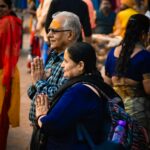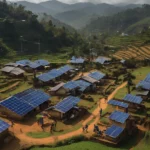How Shared Philosophical Beliefs Continue to Shape the State’s Identity Amid Modern Challenges
Lucknow – Uttar Pradesh, India’s most populous state, carries an enduring legacy of philosophical and cultural richness. From the Vedic teachings that shaped moral and social duties to the syncretic movements of Bhakti and Sufism that championed equality and harmony, the state’s collective consciousness reflects a deep-rooted ethos of shared identity.
However, as modernization and urbanization transform its socio-economic landscape, questions arise about the resilience of this collective consciousness. Can Uttar Pradesh preserve its traditions while addressing modern challenges such as economic inequality, polarization, and generational shifts?
Key Metrics Defining Uttar Pradesh’s Identity
- Population Diversity: Home to over 240 million residents, Uttar Pradesh represents 16.5% of India’s population, with 79.73% Hindus and 19.26% Muslims, alongside other communities (Census 2011).
- Cultural Heritage: The state hosts 25 UNESCO-recognized sites, including Varanasi and Sarnath, attracting millions of visitors annually (UNESCO).
- Economic Landscape: Contributing 8% of India’s GDP, Uttar Pradesh also struggles with a 29% poverty rate, highlighting sharp socio-economic disparities (NITI Aayog, SDG Index 2023).
- Youth Demographics: More than 35% of the state’s population is under 35, emphasizing the importance of aligning traditional values with modern aspirations.
The Foundations of Collective Consciousness
1. Dharma and Karma
The Vedic philosophy of dharma (duty) and karma (action) underpins the moral framework in Uttar Pradesh.
- Application in Rural Life: Many rural communities practice collective farming and resource-sharing, reflecting these ancient ideals.
- Modern Adaptations: Eco-friendly initiatives, such as water conservation projects in Bundelkhand, mirror the emphasis on communal responsibility.
2. Syncretic Traditions of Bhakti and Sufism
The teachings of saints like Kabir and Rahim emphasized love, harmony, and inclusion.
- Cultural Legacy: Shrines like Bareilly’s Dargah Ala Hazrat and Mathura’s Krishna temples are enduring symbols of these philosophies.
- Current Relevance: Interfaith dialogues and joint celebrations, such as Holi and Eid, continue to promote unity despite increasing polarization.
3. Gandhian and Ambedkarite Ideals
The principles of self-reliance and social justice, championed by Gandhi and Ambedkar, remain central to grassroots movements in Uttar Pradesh.
- Local Implementation: Women-led cooperatives in Lucknow and Dalit empowerment initiatives in Purvanchal reflect these ideals.
Expressions of Collective Consciousness Today
1. Youth Engagement in the Digital Era
The younger generation is leveraging technology to reshape Uttar Pradesh’s identity.
- Trend: Digital platforms amplify campaigns for environmental sustainability, gender equality, and interfaith collaboration.
- Example: The Varanasi Digital Heritage Project is documenting and sharing the city’s cultural and spiritual history with global audiences.
2. Cultural Resilience Amid Challenges
Despite socio-political tensions, shared cultural practices remain a cornerstone of Uttar Pradesh’s unity.
- Symbol of Unity: Joint gatherings at Amroha’s Dargah Sharif highlight the enduring power of shared spiritual spaces.
3. Shifts in Gender Roles
Programs like Mission Shakti are empowering women to lead, challenging patriarchal norms entrenched in the state’s collective psyche.
- Impact: Rising female literacy rates and workforce participation are redefining success and agency in Uttar Pradesh.
Challenges to Collective Consciousness
- Economic Inequality: Urban-rural divides, particularly between Noida’s industrial boom and Bundelkhand’s economic struggles, create disparities.
- Communal Polarization: Political and religious tensions occasionally threaten the syncretic traditions that define the state.
- Generational Shifts: Younger generations often prioritize modern aspirations over traditional values, creating friction within families and communities.
Pathways to Strengthening Unity
1. Reviving Syncretic Philosophies
- Action: Expand cultural programs celebrating Bhakti and Sufi traditions to promote harmony and inclusivity.
2. Incorporating Ethical Education
- Policy Recommendation: Include value-based teachings from Kabir, Tulsidas, and Ambedkar in school curricula to nurture empathy and responsibility.
3. Technology as a Bridge
- Initiative: Develop digital platforms to document and disseminate Uttar Pradesh’s cultural and philosophical heritage, engaging younger audiences.
4. Strengthening Local Governance
- Example: Empower Panchayati Raj institutions to align local governance with Gandhian ideals of decentralized leadership.
Conclusion
Uttar Pradesh’s collective consciousness is a dynamic blend of ancient wisdom and modern aspirations. While the state faces challenges such as economic disparity and polarization, its rich philosophical traditions offer pathways to unity and progress.
As Uttar Pradesh evolves, its ability to harmonize tradition with modernity will determine its trajectory—a beacon of resilience and inclusivity for India’s future.









